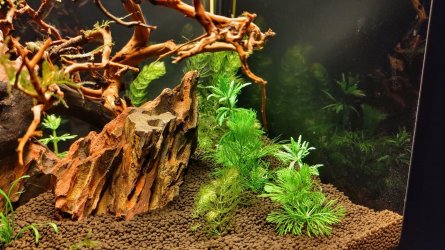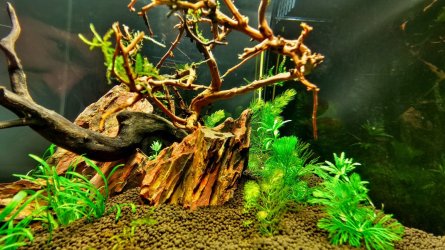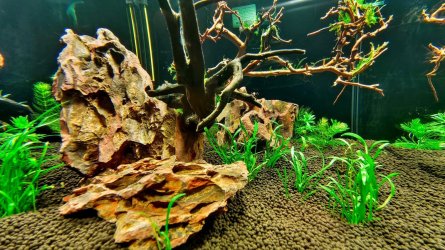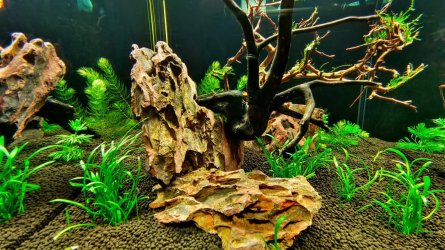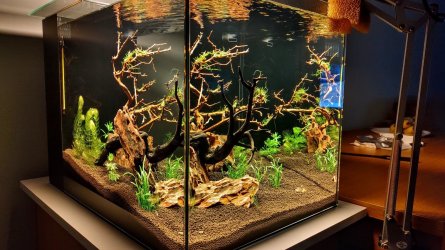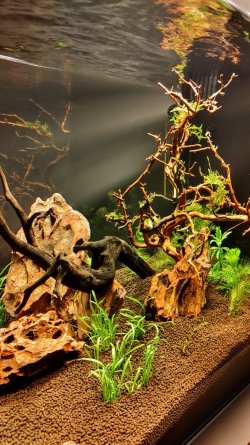cvikcangle
New Member
Some 3 weeks ago I set up an aquarium, Waterbox Peninsula Mini 15, 57L tank, freshwater setup.
Substrate is Master Soil Black - Super Powder (6-7L).
Some dragon stone and driftwood, Ambulia and 2 other similar plants, java moss, some grass and Anubias on the way in (currently in quarantine). No livestock.
Water is very soft, ph 6.8 (tap ph7).
Filter contains some sponge, Sera Siporax and some stock bioballs (came with the tank), all new. Stock pump (1000L/h) is replaced with 600L/h.
On a second day and a week before putting in plants I've added some ammonia (Dr Tim's Ammonium Chloride Solution) - should be 4 drops per gallon, I've added 40 drops.
Some 2 weeks after I checked for ammonia and nitrites and i got 0 for both. It was unexpected.
So, my questions are:

Substrate is Master Soil Black - Super Powder (6-7L).
Some dragon stone and driftwood, Ambulia and 2 other similar plants, java moss, some grass and Anubias on the way in (currently in quarantine). No livestock.
Water is very soft, ph 6.8 (tap ph7).
Filter contains some sponge, Sera Siporax and some stock bioballs (came with the tank), all new. Stock pump (1000L/h) is replaced with 600L/h.
On a second day and a week before putting in plants I've added some ammonia (Dr Tim's Ammonium Chloride Solution) - should be 4 drops per gallon, I've added 40 drops.
Some 2 weeks after I checked for ammonia and nitrites and i got 0 for both. It was unexpected.
So, my questions are:
- Should I bother with cycling or just leave it be (and not add more ammonia)?
- What would be a good flow rate for planted tank? 1000L/h is moving substrate around. 600L/h looks fine but I'm wondering if something like 300-400L/h would be enough.
- When should I start adding fertilisers?
- Do I need permanent source of ammonia in the tank?



